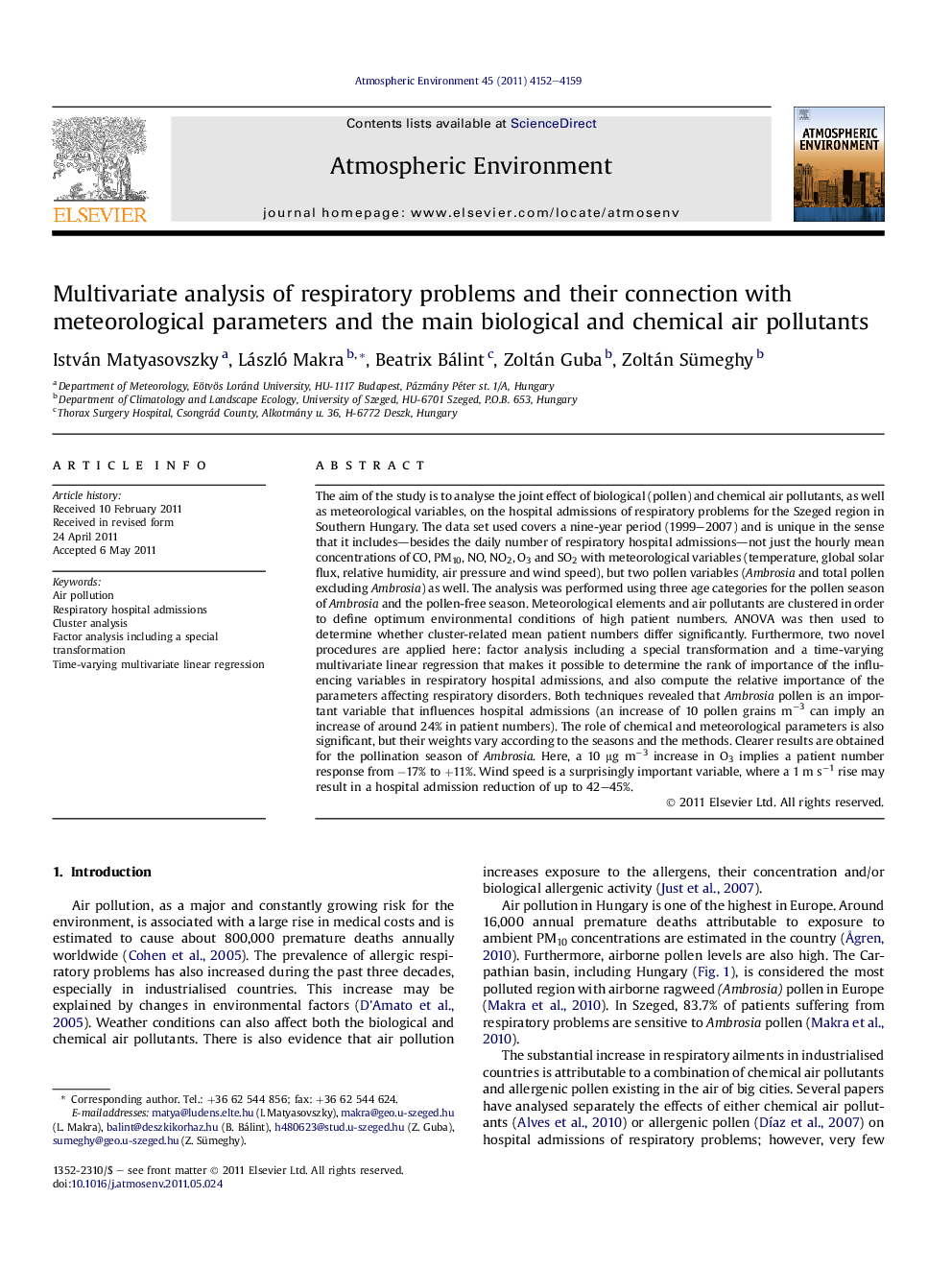| Article ID | Journal | Published Year | Pages | File Type |
|---|---|---|---|---|
| 4439537 | Atmospheric Environment | 2011 | 8 Pages |
The aim of the study is to analyse the joint effect of biological (pollen) and chemical air pollutants, as well as meteorological variables, on the hospital admissions of respiratory problems for the Szeged region in Southern Hungary. The data set used covers a nine-year period (1999–2007) and is unique in the sense that it includes—besides the daily number of respiratory hospital admissions—not just the hourly mean concentrations of CO, PM10, NO, NO2, O3 and SO2 with meteorological variables (temperature, global solar flux, relative humidity, air pressure and wind speed), but two pollen variables (Ambrosia and total pollen excluding Ambrosia) as well. The analysis was performed using three age categories for the pollen season of Ambrosia and the pollen-free season. Meteorological elements and air pollutants are clustered in order to define optimum environmental conditions of high patient numbers. ANOVA was then used to determine whether cluster-related mean patient numbers differ significantly. Furthermore, two novel procedures are applied here: factor analysis including a special transformation and a time-varying multivariate linear regression that makes it possible to determine the rank of importance of the influencing variables in respiratory hospital admissions, and also compute the relative importance of the parameters affecting respiratory disorders. Both techniques revealed that Ambrosia pollen is an important variable that influences hospital admissions (an increase of 10 pollen grains m−3 can imply an increase of around 24% in patient numbers). The role of chemical and meteorological parameters is also significant, but their weights vary according to the seasons and the methods. Clearer results are obtained for the pollination season of Ambrosia. Here, a 10 μg m−3 increase in O3 implies a patient number response from −17% to +11%. Wind speed is a surprisingly important variable, where a 1 m s−1 rise may result in a hospital admission reduction of up to 42–45%.
► Effects of the influencing variables on the respiratory problems differ per seasons. ► The order of importance of influencing variables is highly variable among age groups. ► Ambrosia pollen and O3 are key variables influencing hospital admissions. ► Rise of wind speed may cause a surprisingly notable reduction in hospital admission.
